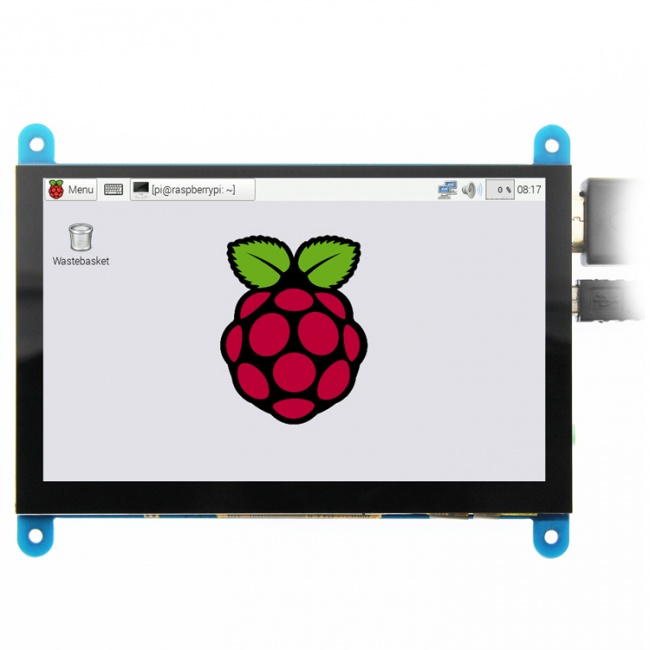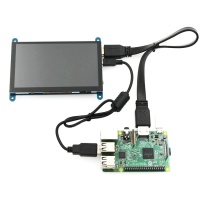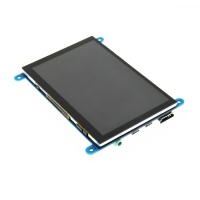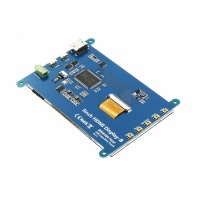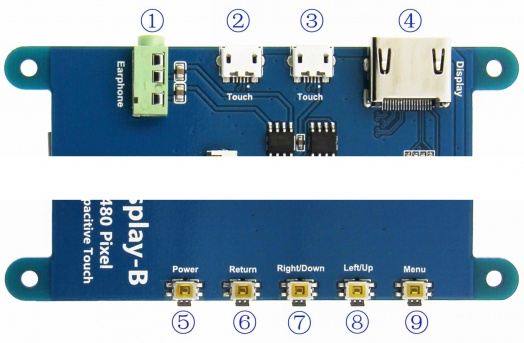Difference between revisions of "5inch HDMI Display-B"
(Tag: Visual edit) |
|||
| Line 8: | Line 8: | ||
<tabber> | <tabber> | ||
Description= | Description= | ||
| − | == <font color=blue>Product picture</font> == | + | == <font color="blue">Product picture</font> == |
[[File:MPI5001-01.jpg|650px]]<br /> | [[File:MPI5001-01.jpg|650px]]<br /> | ||
[[File:MPI5001-02.jpg|200px]] | [[File:MPI5001-02.jpg|200px]] | ||
| Line 14: | Line 14: | ||
[[File:MPI5001-04.jpg|200px]] | [[File:MPI5001-04.jpg|200px]] | ||
| − | == <font color=blue>Product description</font> == | + | == <font color="blue">Product description</font> == |
* 5’’ standard display, 800x480 resolution,maximum HDMI resolution 1920X1080 is supported | * 5’’ standard display, 800x480 resolution,maximum HDMI resolution 1920X1080 is supported | ||
| Line 26: | Line 26: | ||
* CE, RoHS certification | * CE, RoHS certification | ||
| − | == <font color=blue>Product Parameters</font> == | + | == <font color="blue">Product Parameters</font> == |
* Size: 5.0 (inch) | * Size: 5.0 (inch) | ||
| Line 48: | Line 48: | ||
⑧ Left/Up: Direction Left/Up (Backlight shortcut key)<br /> | ⑧ Left/Up: Direction Left/Up (Backlight shortcut key)<br /> | ||
⑨ Menu: Open the OSD / Select key (Only valid in the OSD Settings menu)<br /> | ⑨ Menu: Open the OSD / Select key (Only valid in the OSD Settings menu)<br /> | ||
| − | == <font color=blue>How to use with Raspbian/Ubuntu Mate/Win10 IoT Core System</font> == | + | == <font color="blue">How to use with Raspbian/Ubuntu Mate/Win10 IoT Core System</font> == |
=== '''Step 1, Install Raspbian official image''' === | === '''Step 1, Install Raspbian official image''' === | ||
| Line 70: | Line 70: | ||
Insert the TF Card to Raspberry Pi, connect the Raspberry Pi and LCD by HDMI cable; connect USB cable to one of the four USB ports of Raspberry Pi, and connect the other end of the USB cable to the USB port of the LCD; then supply power to Raspberry Pi; after that if the display and touch both are OK, it means drive successfully (please use the full 2A for power supply). | Insert the TF Card to Raspberry Pi, connect the Raspberry Pi and LCD by HDMI cable; connect USB cable to one of the four USB ports of Raspberry Pi, and connect the other end of the USB cable to the USB port of the LCD; then supply power to Raspberry Pi; after that if the display and touch both are OK, it means drive successfully (please use the full 2A for power supply). | ||
| − | == <font color=blue>How to use as PC monitor</font> == | + | == <font color="blue">How to use as PC monitor</font> == |
* connect the computer HDMI output signal to the LCD HDMI interface by using the HDMI cable | * connect the computer HDMI output signal to the LCD HDMI interface by using the HDMI cable | ||
| Line 76: | Line 76: | ||
* If there are several monitors, please unplug other monitor connectors first, and use LCD as the only monitor for testing. | * If there are several monitors, please unplug other monitor connectors first, and use LCD as the only monitor for testing. | ||
| − | == <font color=blue>How to rotate display direction and touch</font> == | + | == <font color="blue">How to rotate display direction and touch</font> == |
* '''[[How to modify the display orientation-CTP(En)]]''' | * '''[[How to modify the display orientation-CTP(En)]]''' | ||
| + | |||
|-| | |-| | ||
FAQ=<table class="a-r at-c roundy bgd-blue bl-white" style="margin-left: 5px; margin-bottom: 5px;"> <table style="margin-top: 10px; border-right: 20px solid transparent; border-top: 20px solid #008DE6;"><table style="margin-top: 10px; border-right: 20px solid transparent; border-top: 20px solid #008DE6;"> | FAQ=<table class="a-r at-c roundy bgd-blue bl-white" style="margin-left: 5px; margin-bottom: 5px;"> <table style="margin-top: 10px; border-right: 20px solid transparent; border-top: 20px solid #008DE6;"><table style="margin-top: 10px; border-right: 20px solid transparent; border-top: 20px solid #008DE6;"> | ||
| Line 86: | Line 87: | ||
<tr> | <tr> | ||
<td><font color="#FFF"> <big><big> | <td><font color="#FFF"> <big><big> | ||
| − | + | Question: Using the Raspberry Pi image provided by the CD/net disk, cannot use the LCD normally. | |
</big></big></font> | </big></big></font> | ||
</td></tr></table> | </td></tr></table> | ||
| Line 95: | Line 96: | ||
<table class="roundy mw-collapsible" style="margin-top: -30px; margin-left: -5px; margin-right: -5px; background: #DDD;"> | <table class="roundy mw-collapsible" style="margin-top: -30px; margin-left: -5px; margin-right: -5px; background: #DDD;"> | ||
<tr> | <tr> | ||
| − | <td><font color="#008DE6"> | + | <td><font color="#008DE6">Answer:</font> <br /> |
</td></tr> | </td></tr> | ||
<tr> | <tr> | ||
| − | <td> | + | <td>Confirm that the hardware connection is correct and the contact is good. Determine whether TF card is normal and whether the system is started normally. The PWR lamp is always bright when the Raspberry Pi is started, and the ACT light is flashing. If you find both lights on, it may be the TF card does not successfully burn the image file, or that the TF card is not in contact with the Raspberry Pi. Recommend using 5V 2A power adapter to power the Raspberry Pi. If you use a computer USB interface, you may not be able to activate the Raspberry Pi due to insufficient power supply.<ul><li></li> |
| − | <ul><li> | ||
| − | |||
| − | |||
| − | |||
| − | |||
| − | </li> | ||
</ul> | </ul> | ||
</td></tr></table> | </td></tr></table> | ||
| Line 115: | Line 110: | ||
<table class="roundy" style="margin-top: -30px; margin-left: -5px; margin-right: -5px; background: #008DE6;"> | <table class="roundy" style="margin-top: -30px; margin-left: -5px; margin-right: -5px; background: #008DE6;"> | ||
<tr> | <tr> | ||
| − | <td><font color="#FFF"> | + | <td><font color="#FFF"> <big><big>Question: What is the reason for the LCD not displayed using the image provided by the Raspberry Pi official?</big></big></font> |
| − | + | ||
</td></tr></table> | </td></tr></table> | ||
</td></tr></table> | </td></tr></table> | ||
| Line 124: | Line 119: | ||
<table class="roundy mw-collapsible" style="margin-top: -30px; margin-left: -5px; margin-right: -5px; background: #DDD;"> | <table class="roundy mw-collapsible" style="margin-top: -30px; margin-left: -5px; margin-right: -5px; background: #DDD;"> | ||
<tr> | <tr> | ||
| − | <td><font color="#008DE6"> <b><big> | + | <td><font color="#008DE6"> <b><big>Answer:</big></b></font> |
</td></tr> | </td></tr> | ||
<tr> | <tr> | ||
<td> | <td> | ||
| − | <ul><li> | + | <ul><li>LCD needs to be installed driver to display correctly, please refer to "How to install the LCD driver (En)" related documentation. |
| − | </li><li> | + | </li><li>It is recommended to use the image file provided by us first to test. After the test is passed, use the image file of Raspberry Pi official and installed the driver. |
</li></ul> | </li></ul> | ||
</td></tr></table> | </td></tr></table> | ||
Revision as of 13:48, 18 May 2018
| 语言选择(Language): | 中文 | EN |
Product picture
Product description
- 5’’ standard display, 800x480 resolution,maximum HDMI resolution 1920X1080 is supported
- Capacitive touch screen, support 5 point touch maximum
- Built-in OSD menu adjustment function (adjustable Contrast/ Brightness/Saturation, etc.)
- It is compatible with mainstream mini PC such as Raspberry Pi, BB Black, Banana Pi
- It can also be used as a general-purpose HDMI display, connecting computers, TV boxes, Microsoft Xbox360, SONY PS4, Nintendo Switch and so on
- Used as a Raspberry Pi display that supports Raspbian, Ubuntu, Kodi, Win10 IOT, single-touch, free drive
- Work as a PC monitor, support Win7, Win8, Win10 system 5 point touch (XP and older version system: single-point touch), free drive
- Support HDMI audio output
- CE, RoHS certification
Product Parameters
- Size: 5.0 (inch)
- SKU: MPI5001
- Resolution: 800 × 480 (dots)
- Touch: 5 point capacitive touch
- Audio output: support
- Dimensions: 121.11*95.24(mm)
- Weight: 248 (g)
Hardware Description
① Earphone: 3.5mm Audio output interface
②&③ Touch: USB connector ( For power supply and touch output, the functions of the both are the same, can just use one of them)
④ Display: HDMI interface ( For connecting motherboard and LCD monitor)
⑤ Power: Controls the backlight turned on and off to save power
⑥ Return: Return (Only valid in the OSD Settings menu)
⑦ Right/Down: Direction Right/Down (Backlight shortcut key)
⑧ Left/Up: Direction Left/Up (Backlight shortcut key)
⑨ Menu: Open the OSD / Select key (Only valid in the OSD Settings menu)
How to use with Raspbian/Ubuntu Mate/Win10 IoT Core System
Step 1, Install Raspbian official image
- Download the latest image from the official download.
- Install the system according to the official tutorial steps.
Step 2, modify the “config.txt”
After the programming of Step1 is completed, open the config.txt file of TF card root directory and
max_usb_current=1 hdmi_force_hotplug=1 config_hdmi_boost=7 hdmi_group=2 hdmi_mode=1 hdmi_mode=87 hdmi_drive=1 hdmi_cvt 800 480 60 6 0 0 0
Step 3, Drive the 5inch HDMI Display-B with the Raspberry Pi
Insert the TF Card to Raspberry Pi, connect the Raspberry Pi and LCD by HDMI cable; connect USB cable to one of the four USB ports of Raspberry Pi, and connect the other end of the USB cable to the USB port of the LCD; then supply power to Raspberry Pi; after that if the display and touch both are OK, it means drive successfully (please use the full 2A for power supply).
How to use as PC monitor
- connect the computer HDMI output signal to the LCD HDMI interface by using the HDMI cable
- Connect the LCD's USB Touch interface (Either of the two MicroUSB) to the USB port of the device
- If there are several monitors, please unplug other monitor connectors first, and use LCD as the only monitor for testing.
How to rotate display direction and touch
|
|
|
|
|
|
|
|
|
|
|
|
|
|
|
|
QQ:3002773612
EMAIL:3002773612@qq.com
Description: please prepare customer information (ordering unit, ordering person, etc.) before making after-sales service for verification.
| |
